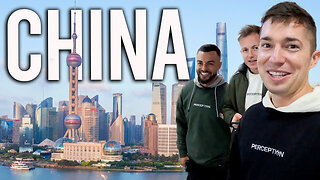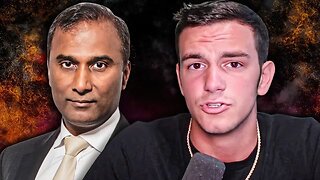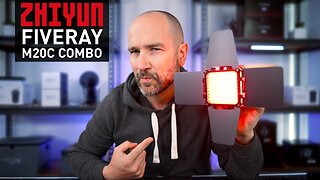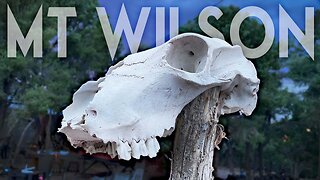A View From The Cockpit, Ep #21
Steve Knight has been in the aviation industry for 50 years. He holds an airline transport pilot certificate, a commercial pilot certificate, a flight engineer certificate, and a certified flight instructor certificate. He’s flown more than 22,000 hours on seven types of aircraft, all over the world. He’s been Chief Pilot, Director of Operations, Fleet Captain, and Standards Captain. He spent 39 years at United Airlines, flying the Boeing 777 and 747, before retiring. In this special episode of Upthinking Finance™, Steve Knight shares a view from the cockpit.
================================
LISTEN IF YOU ARE INTERESTED IN…
[00:00] A view from the cockpit
[2:20] The importance of standard operating procedures (SOPs)
[12:05] Steve’s experience(s) navigating problems outside the cockpit
[14:03] Why developing friendships with coworkers can be difficult
[15:33] Is a 40-year tenure with an airline common?
[17:19] When the government no longer subsidized air travel
[20:53] The impact of technology on aircraft
[25:14] How Steve reconciles technology with experience
[29:07] Two crash landings that changed the industry
[34:14] The most challenging airports for pilots
[41:08] Steve’s favorite views from the cockpit
[45:20 How Steve’s travel has changed his view of the world
The importance of standard operating procedures (SOPs)
Aircraft live and die by standard operating procedures (SOPs). On any given day, you might be flying a long-haul international trip with three people you’ve never flown with before. You have rigid SOPs so everyone knows what to expect. SOPs cover everything from starting the engine, to taxiing, to take-off, to landing, and everything in between.
Before takeoff, the pilot usually addresses the passengers to share what to expect (how long the flight will be, the weather, and whether or not they expect any rough air). Typically, they have four pilots on the long haul flight from LA to Sydney that Steve ended his career flying. There are usually 15 flight attendants and 250–300 passengers. It’s a small city going to 35,000 feet, which is why procedures are of paramount importance.
The impact of technology on aircraft
Steve started flying when they still used analog instruments. He started with dials and gauges. Now, the cockpit is covered in computer screens. Pilots went from primarily flying an airplane to primarily managing an airplane. It’s a large safety improvement but a huge learning curve. Steve emphasized that pilots need to be able to fly both ways.
Since he started flying, they’ve implemented Traffic Collision Avoidance Systems (TCAVs) that will alert pilots if there’s a mid-air conflict. The computer not only tells them to descend or climb but the two airplanes can communicate with each other so one plane climbs while the other descends.
When Steve first started as a flight engineer, he manually tracked when the plane took off and landed. Now they have ACARS—Aircraft Communications, Addressing and Reporting System. So when you look at the app on your phone to see when your flight will land, that information is sent automatically.
How else has improving technology impacted the airline industry? Listen to find out!
Steve’s favorite views from the cockpit
Steve has flown all over the world for the last three decades. On a route from Europe to the West Coast of the US, he’d often see the Northern Lights across Canada, which was incredibly beautiful. When the volcano in Iceland erupted in 2010, they could see the volcano erupting in the distance.
Steve was flying a charter of camera crews to the Beijing Olympics in 2008. He’d flown this many times, which usually went over the north pole and you come in over Mongolia into Beijing. The smog is typically so bad that you don’t see the airport until you’re half a mile away.
But Beijing was so concerned about the optics of hosting the Olympics that they shut down factories, didn’t let people drive their cars, and implemented other things to reduce the smog for the Olympics. So when Steve flew into Beijing on that trip, he could see the whole city from 50 miles away—a site to behold.
Don’t miss this episode for a fascinating glimpse into the world of aviation from the lens of a pilot!
Steve Knight is not affiliated with or endorsed by LPL Financial or Capital Investment Advisers.
Securities and Advisory services offered through LPL Financial. A registered investment advisor. Member FINRA & SIPC.
The financial professionals associated with LPL Financial may discuss and/or transact business only with residents of the states in which they are properly registered or licensed. No offers may be made or accepted from any resident of any other state.
=============================
CONNECT WITH EMERSON:
Website: www.CIAdvisers.com
-
 17:55
17:55
JoBlo Originals
20 hours agoWhat Happened to EPIC MEAL TIME?
9.5K4 -
 31:02
31:02
Degenerate Plays
11 hours agoBest Girl Needs Her Swimsuit - Final Fantasy 7: Ever Crisis : Part 2
8.27K1 -
 48:14
48:14
World Nomac
1 day agoMy First Time in Shanghai, China 🇨🇳
9.71K3 -
 2:57:13
2:57:13
SNEAKO
11 hours ago"Who Do You Hate the Most?" - One Minute Podcast
83.9K88 -
 4:47:25
4:47:25
SonnyFaz
6 hours agoDr. Shiva x Sonny IRL
47.6K16 -
 4:28:03
4:28:03
LumpyPotatoX2
13 hours agoSub-Sunday on Rumble - #RumbleTakeover
61.4K4 -
 26:04
26:04
iamLucid
1 day agoVideo Game Piracy is Unstoppable
89.2K47 -
 16:31
16:31
GeekyNerdyTechy
1 day agoZHIYUN Fiveray M20C Combo Light Review & Tutorial
108K8 -
 8:29
8:29
ParisDemers
1 day agoThe Kratos/God Of War Workout Program (His Real-Life Training)
97.4K7 -
 16:14
16:14
CarlCrusher
1 day agoSkinwalker's Evil Twin - Beyond Skinwalker Ranch Behind the Scenes Season 1 ep 2
99K12